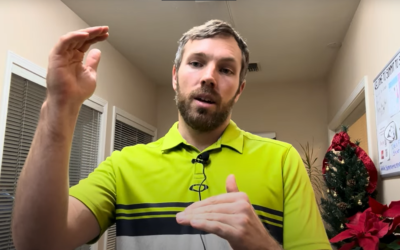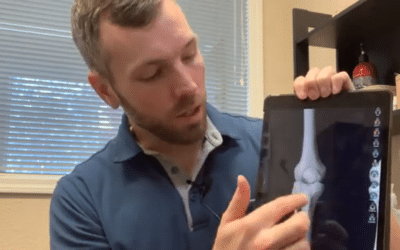How can chiropractic help with headaches? If you are someone who has or is suffering from occasional or chronic headaches, chiropractic is a great way to find relief from headache pain without excessive medication. To start, there are a lot of different types of headaches out there and depending on the type of headache you have, that will vary in where you can find relief. The most common types of headaches are tension headaches, and cervicogenic headaches, headaches coming from the neck. These are the most common headaches by far. The symptoms that you usually have are feeling tension or pain right at the bottom of your skull where there is some soft muscle just below that area. This area is called your suboccipital region, right under the occiput of your skull. These muscles can get really tight while we are constantly sticking our head out. This is stretching the muscles in a way that they were not meant to move and do it for hours and hours on end. When those muscles get tight, they don’t allow the neck to move and can create tension around the temples and eyebrows area like a tight head band and can give you a headache. Chiropractic can help that by decreasing some of that tension in the muscles and neck joints with adjustments and soft tissue work. Sometimes this can make the headache go away instantly. A few things that you can do at home include stop pushing your head out so much and try and bring it back in. Being aware of this position and slowly changing it will take mental work more than physical work. This will give these muscles a break and not allow them to always be on tension. Regular looking down and side to side won’t touch or stretch that area we are discussing. Another option for home remedies is using something like RockSauce, (Arnica, Icyhot, BioFreeze, etc.) a rub on cream or gel that help decrease muscle tension. Rub it at the base of the hairline in that suboccipital region and this can sometimes make your headache go away. One other option is using a tennis ball or something like a hardback book and putting it in that region to help alleviate the muscle tension. So, these are some simple things that you can do at home to try keep the headaches at bay. I will also say that medication is an option as well. I will on rare occasion use medication to help with my headaches when I’ve tried some of the other options and I haven’t gotten relief. However, I do notice that when I get adjusted on a regular basis my headaches aren’t as often or as bad. If you are someone who has experienced headaches at all and haven’t tried chiropractic, I would definitely recommend you try this type of treatment out. Chiropractic works great for headaches. Especially if you are sitting at a desk or doing a lot of computer work, you are causing a lot of tension in that region of your neck and head. Here are few options for you, but again if you haven’t tried chiropractic for headaches, give it a shot. Sometimes chiropractic can give you that instant relief and help you stop suffering from some of these nasty headaches or figure out where else this headache is coming from and address it from there.
Call and stop by today to start getting relief from those headaches.
Tahoe’s Premiere Sports Chiropractor
Follow Us on
Facebook https://www.facebook.com/summittoshore/
Instagram https://www.instagram.com/summittoshore/





